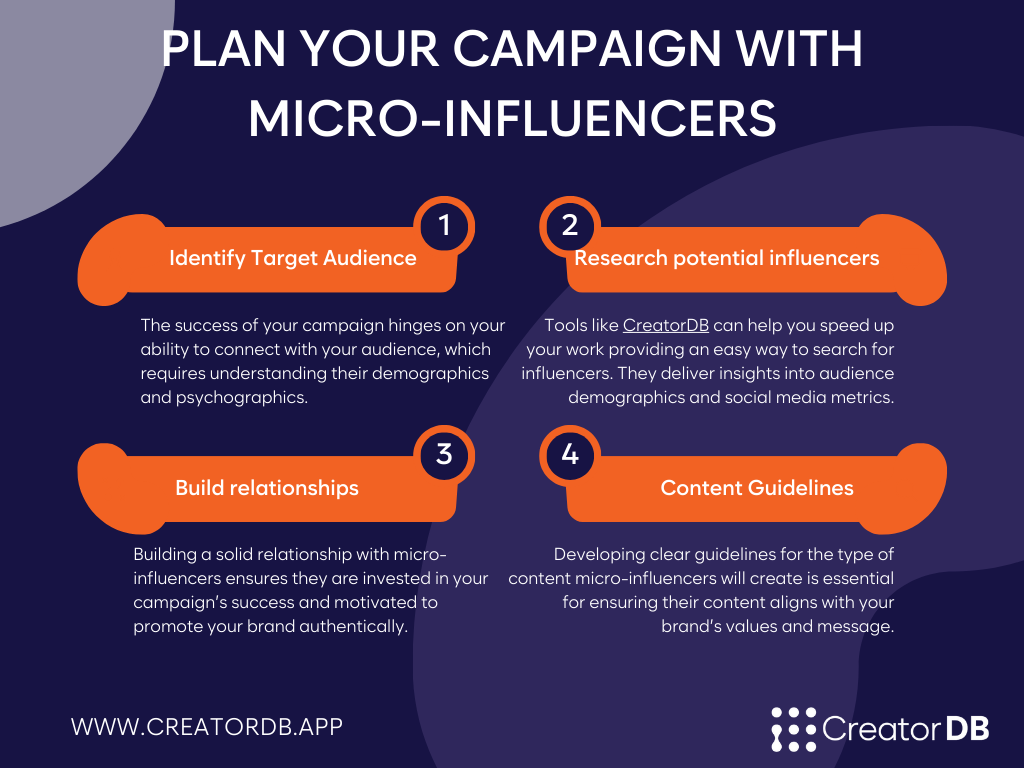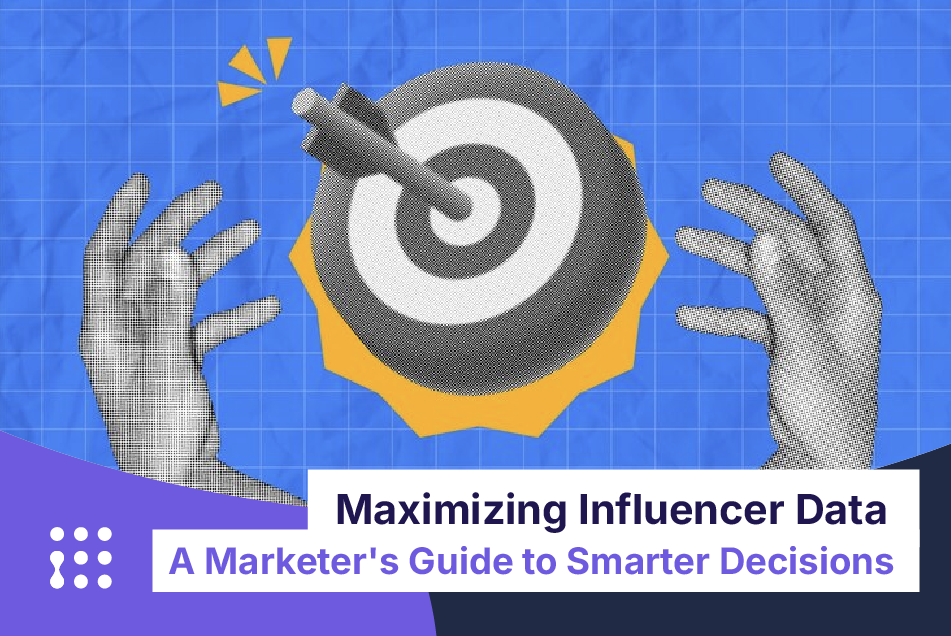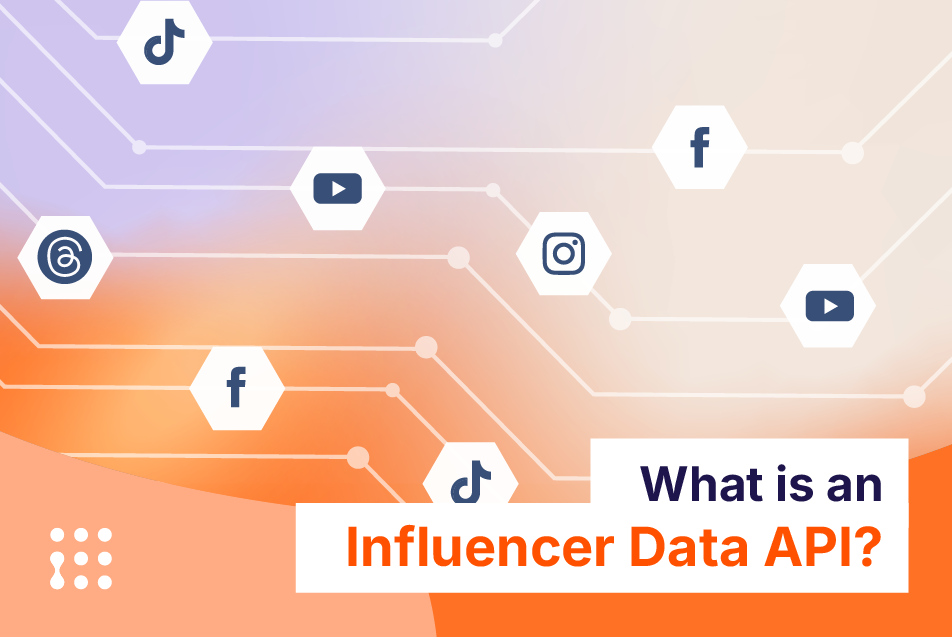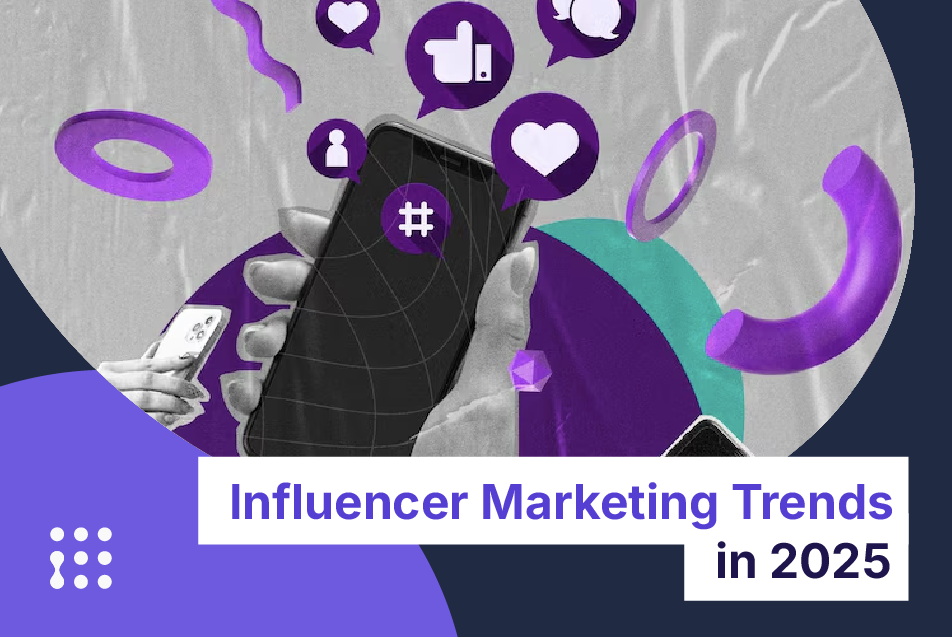In today’s digital age, influencer marketing has become essential to a successful marketing campaign. However, the competition for the top influencer is fierce, and it is difficult for any brand to stand out if you only plan to use multi-million followers influencers. This is why you should plan your campaign with micro-influencers – individuals with a smaller but highly engaged following on social media platforms.
Unlike macro-influencers with millions of followers, micro-influencers have a more niche audience and are highly effective in reaching and engaging with a specific target audience. They are also cost-effective, making them popular for small and medium-sized businesses.
To plan a marketing campaign with micro-influencers is required careful consideration of several factors, including identifying the target audience, researching potential influencers, building relationships, and developing content guidelines. This article will delve into these factors to help you plan a successful micro-influencer marketing campaign for your brand.
Identifying target audience
One of the most critical steps in planning a marketing campaign with micro-influencers is identifying the target audience. The success of your campaign hinges on your ability to connect with your audience, which requires a deep understanding of their demographics and psychographics.
Demographics refer to characteristics such as age, gender, location, income, and education, while psychographics focus on interests, values, attitudes, and lifestyle.
Defining the goals and objectives of your campaign is crucial for ensuring its success. You might aim to increase brand awareness, drive traffic to your website, or boost sales.
Ensure your goals align with your overall marketing strategy and business objectives.
Defining the objectives of your campaign will help you track your progress and measure success. Track metrics such as engagement rate, impressions, click-through rate, or conversions. Knowing what you want to achieve and how you plan to measure it will help you stay focused and determine the success of your campaign.
You can learn more about metrics and their importance with our 101 course on analytics.
Researching potential micro-influencers
Once you have identified your target audience’s demographics and psychographics, the next step is to find relevant micro-influencers who can help you reach and engage with them. Researching potential micro-influencers involves analyzing their audience and engagement and measuring the impact of their previous campaigns.
Tools like CreatorDB can help you speed up your work and find the right influencers. These tools can help you plan your marketing campaign with micro-influencers by providing an easy way to search for influencers by keywords, topics, locations, and hashtags. They deliver insights into influencer profiles, audience demographics, and engagement metrics, making evaluating their suitability for your campaign easier.
Analyzing the potential micro-influencers audience and engagement is critical to ensure they can effectively reach and engage with your target audience. Look at their followers’ demographics, psychographics, and engagement rates to determine whether they align with your campaign goals.
You want to partner with influencers whose audience matches your target audience’s characteristics and interests and who have high engagement rates, indicating that their followers actively engage with their content.
Another important aspect of researching potential micro-influencers is measuring the impact of their previous campaigns. Analyzing their past campaigns’ performance can help you determine whether they can deliver the results you want for your campaign.
Using the CreatorDB platform would be sufficient to look at the sponsored content tab to see how the sponsored content they created has performed and was received. Look at their engagement rates and reach to see how effective their campaigns have been in the past.

Find Your
Perfect Influencer
Match Instantly
Building relationships with micro-influencers
Once you have identified potential micro-influencers for your campaign, the next step is to build a relationship with them. Building a solid relationship with micro-influencers is essential for ensuring they are invested in your campaign’s success and motivated to promote your brand authentically.
Approaching micro influencers professionally is crucial for building a positive and lasting relationship with them. When reaching out to potential influencers, introduce yourself and your brand, explain why you think they would be a good fit for your campaign, and outline the partnership’s benefits.
Be clear about your expectations, and ask for their input and ideas. Make sure to communicate professionally and respectfully throughout the negotiation process.
You can learn more in-depth about how to contact influencers here.
Negotiating the terms of the partnership is an essential step in building a relationship with micro-influencers. Discuss the scope of the partnership, including the type of content they will create, the timeline, and the compensation.
Be clear about your expectations, and be open to their ideas and feedback. Reaching a mutually beneficial agreement that aligns with your campaign goals is essential.
Managing the relationship and communication with micro-influencers throughout the campaign is crucial for its success. Ensure they have clear guidelines and expectations for the content they will create and promote. Stay in touch throughout the campaign, providing feedback and support and answering any questions they may have. Celebrate their successes, and show appreciation for their hard work and dedication to the campaign.
Maintaining a positive and respectful relationship with micro-influencers will ensure the success of your current campaign and open the door to potential future collaborations.
Discover why long-term influencer partnerships are the real deal here.
Planning content guidelines
Once you have contacted the micro-influencers you are interested in and negotiated the terms of the partnership, the next step is to plan content guidelines. Developing clear guidelines for the type of content micro-influencers will create is essential for ensuring their content aligns with your brand’s values and message.
Co-creating content guidelines with micro-influencers ensures their content aligns with your campaign’s goals and resonates with their audience. Involve micro-influencers in content planning, and ask for their input and ideas.
Collaborating with influencers can help you create authentic and engaging content that reflects their unique voice and style.
While it’s important to involve micro-influencers in content creation, ensuring that the guidelines align with your brand’s values and message is essential. Clearly outline the brand’s tone, messaging, and visual guidelines, and provide examples of what kind of content is on-brand. Ensure that the policies are consistent with your brand’s overall marketing strategy and that the content created by micro-influencers is consistent with your brand’s image.
Ensuring the guidelines are clear and easy to follow is also essential.
Provide clear instructions on the type of content, the number of posts, the platforms to be used, and the timeline. Give micro-influencers the creative freedom to produce content that resonates with their audience while still adhering to the guidelines.

Conclusion
Planning a successful marketing campaign with micro-influencers requires careful consideration of several factors, including identifying the target audience, researching potential influencers, building relationships, developing content guidelines, and measuring success.
By following these steps, you can create a campaign that resonates with your target audience, promotes your brand authentically, and achieves your business objectives. Remember, micro-influencers may not have millions of followers but have a highly engaged and niche audience, making them a practical and cost-efficient option for small and medium-sized businesses.





